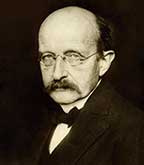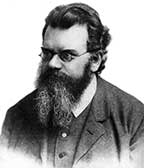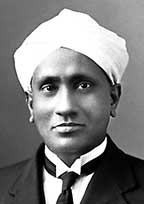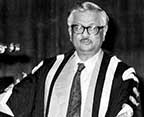Souparnika. N. K and Niranjana. N. K
Many of us believe that scientists do not care much for art and music, but the fact is that music and art have been instrumental in providing insights for several scientists to unfold mysteries and unveil the secrets of nature; it has been the source and motivation to test mathematical hypotheses for great scientists like Einstein. Let us read about the achievements of some scientists and their passion for music.
 Albert Einstein is best known for his formula E = mc2 and the theory of relativity. He received the 1921 Nobel prize in physics for his discovery of the law of photoelectric effect. Besides physics, Einstein was also a gifted and enthusiastic musician (violinist). He once said that had he not been a scientist, he would have been a musician. “Life without playing music is inconceivable for me,” he declared. “I live my daydreams in music. I see my life in terms of music. I get most joy in life out of music.”
Albert Einstein is best known for his formula E = mc2 and the theory of relativity. He received the 1921 Nobel prize in physics for his discovery of the law of photoelectric effect. Besides physics, Einstein was also a gifted and enthusiastic musician (violinist). He once said that had he not been a scientist, he would have been a musician. “Life without playing music is inconceivable for me,” he declared. “I live my daydreams in music. I see my life in terms of music. I get most joy in life out of music.”
 Max Planck was a German theoretical physicist who originated the quantum theory, which won him the Nobel prize for physics in 1918. Planck was a pianist of considerable skill. As a student, he composed songs and even an entire operetta. He conducted choruses and orchestras, played the organ at church services, and studied harmony and counterpoint. In his later days Planck conducted an informal chorus that included his children, neighbours, and friends.
Max Planck was a German theoretical physicist who originated the quantum theory, which won him the Nobel prize for physics in 1918. Planck was a pianist of considerable skill. As a student, he composed songs and even an entire operetta. He conducted choruses and orchestras, played the organ at church services, and studied harmony and counterpoint. In his later days Planck conducted an informal chorus that included his children, neighbours, and friends.
 Ludwig Eduard Boltzmann was an Austrian physicist whose greatest achievement lay in the development of statistical mechanics which predicted the existence of atoms. Planck and Einstein used Boltzmann’s equation S= k log W, for their studies which led to the birth of new developments in modern physics. Music played a special role in Boltzmann’s life. During his childhood for many years he took piano lessons from Anton Bruckner, an Australian composer known for his symphonies. Boltzmann played regularly for family and friends. For his three daughters he would often host dances at which he would play the piano.
Ludwig Eduard Boltzmann was an Austrian physicist whose greatest achievement lay in the development of statistical mechanics which predicted the existence of atoms. Planck and Einstein used Boltzmann’s equation S= k log W, for their studies which led to the birth of new developments in modern physics. Music played a special role in Boltzmann’s life. During his childhood for many years he took piano lessons from Anton Bruckner, an Australian composer known for his symphonies. Boltzmann played regularly for family and friends. For his three daughters he would often host dances at which he would play the piano.
 C.V. Raman was the first Indian to win the Nobel prize in science for his “Raman Effect” in 1930. He explained the science behind the blue colour of the sky and ocean. Raman was a great lover of music. He did a lot of research on musical instruments. He showed that it is the black patch in the middle of the tabla’s operational surface that gives it the harmonic overtones. He used to say, “I should live long, because I have not heard all the music I want to hear.” He was a frequent visitor to a shop selling musical instruments in Balepet, in Bangalore to buy musical instruments like the mridangam, tabla, veena, violin, and the nagaswaram for conducting experiments.
C.V. Raman was the first Indian to win the Nobel prize in science for his “Raman Effect” in 1930. He explained the science behind the blue colour of the sky and ocean. Raman was a great lover of music. He did a lot of research on musical instruments. He showed that it is the black patch in the middle of the tabla’s operational surface that gives it the harmonic overtones. He used to say, “I should live long, because I have not heard all the music I want to hear.” He was a frequent visitor to a shop selling musical instruments in Balepet, in Bangalore to buy musical instruments like the mridangam, tabla, veena, violin, and the nagaswaram for conducting experiments.
 Raja Ramanna was an Indian physicist best known for his leading role in India’s nuclear programme. Ramanna is often considered the “Father of India’s nuclear programme and is also a recipient of the Padma Vibhushan. He was an expert on music and was also an accomplished musician. He was drawn to music at an early age. To quote Ramanna: “My close association with western music started with my changing schools when I was six years old.” Krisnaraja Wadiyar, the then Maharaja of Mysore was a great admirer of young Ramanna’s abilities in music.
Raja Ramanna was an Indian physicist best known for his leading role in India’s nuclear programme. Ramanna is often considered the “Father of India’s nuclear programme and is also a recipient of the Padma Vibhushan. He was an expert on music and was also an accomplished musician. He was drawn to music at an early age. To quote Ramanna: “My close association with western music started with my changing schools when I was six years old.” Krisnaraja Wadiyar, the then Maharaja of Mysore was a great admirer of young Ramanna’s abilities in music.
 Dr. APJ Abdul Kalam was the 11th president of India from 2002 to 2007. He spent 40 years as a scientist and science administrator, mainly at the Defence Research and Development Organisation and Indian Space Research Organisation and was involved in India’s space program and missile research. Kalam used to spend his spare time playing the veena. Music was an integral part of his life and he was an ardent fan of carnatic music. He wrote poetry in Tamil, his mother tongue. Seventeen of his poems were translated into English and published in 1994 as a book entitled My Journey.
Dr. APJ Abdul Kalam was the 11th president of India from 2002 to 2007. He spent 40 years as a scientist and science administrator, mainly at the Defence Research and Development Organisation and Indian Space Research Organisation and was involved in India’s space program and missile research. Kalam used to spend his spare time playing the veena. Music was an integral part of his life and he was an ardent fan of carnatic music. He wrote poetry in Tamil, his mother tongue. Seventeen of his poems were translated into English and published in 1994 as a book entitled My Journey.
 Richard P. Feynman was an American theoretical physicist who was widely regarded as one of the most brilliant physics teachers. He received the 1965 Nobel prize in physics. He was also known for his popular writings and for his role in determining the cause of the Challenger space shuttle accident. While teaching at the Centre of Physical Research in Brazil, Feynman discovered his interest in Samba music. He practiced the drum for weeks and was able to play during the carnival season. He was also a painter. With continued practice Feynman became good enough to exhibit his paintings in museums and galleries.
Richard P. Feynman was an American theoretical physicist who was widely regarded as one of the most brilliant physics teachers. He received the 1965 Nobel prize in physics. He was also known for his popular writings and for his role in determining the cause of the Challenger space shuttle accident. While teaching at the Centre of Physical Research in Brazil, Feynman discovered his interest in Samba music. He practiced the drum for weeks and was able to play during the carnival season. He was also a painter. With continued practice Feynman became good enough to exhibit his paintings in museums and galleries.
Souparnika. N. K is presently work as adjunct faculty at Devagiri College, Calicut, Kerala.
Niranjana. N.K is interested in reading and writing about great thinkers and scientists.
